Key takeaways
- Stoicism emphasizes focusing on what is within our control, fostering calm acceptance amidst life’s chaos.
- Key texts like Epictetus’s *Enchiridion*, Marcus Aurelius’s *Meditations*, and Seneca’s letters offer practical tools and insights for applying Stoic principles.
- Consistent study habits, including journaling and applying Stoic concepts to daily challenges, enhance personal understanding and growth.
- Viewing obstacles as opportunities for growth transforms challenges into valuable lessons, reinforcing the importance of resilience and perspective in Stoicism.
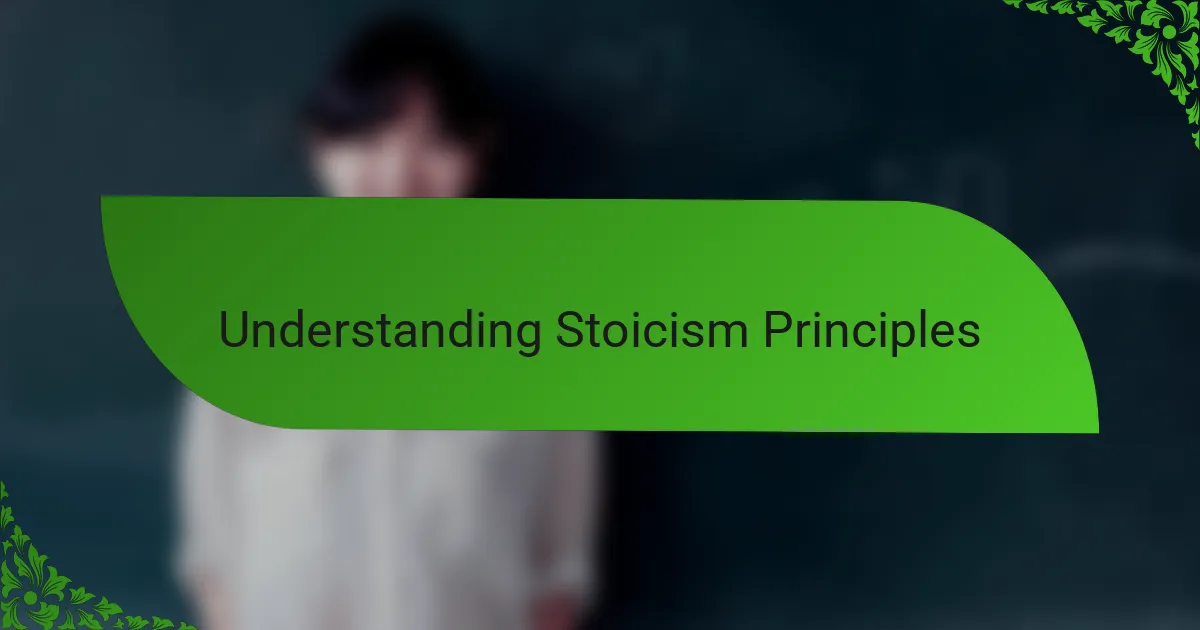
Understanding Stoicism Principles
Stoicism, to me, first revealed itself through its focus on what we can control versus what we can’t. I remember feeling overwhelmed by life’s chaos, and this simple distinction shifted my mindset profoundly. Have you ever caught yourself obsessing over things completely out of your hands? That’s the moment Stoicism steps in, urging calm acceptance.
What strikes me most about Stoicism is its emphasis on inner virtues like wisdom, courage, justice, and temperance. I found these weren’t just lofty ideals but practical guides that shaped how I reacted to everyday challenges. When I reminded myself to approach situations with courage or temperance, it helped me feel grounded even amid stress.
Another core principle is the idea of living in agreement with nature. Initially, it sounded abstract, but I now see it as aligning my actions with reason and purpose. It makes me ask: am I truly living according to my nature, or just reacting blindly? This reflection is a powerful tool for intentional living.
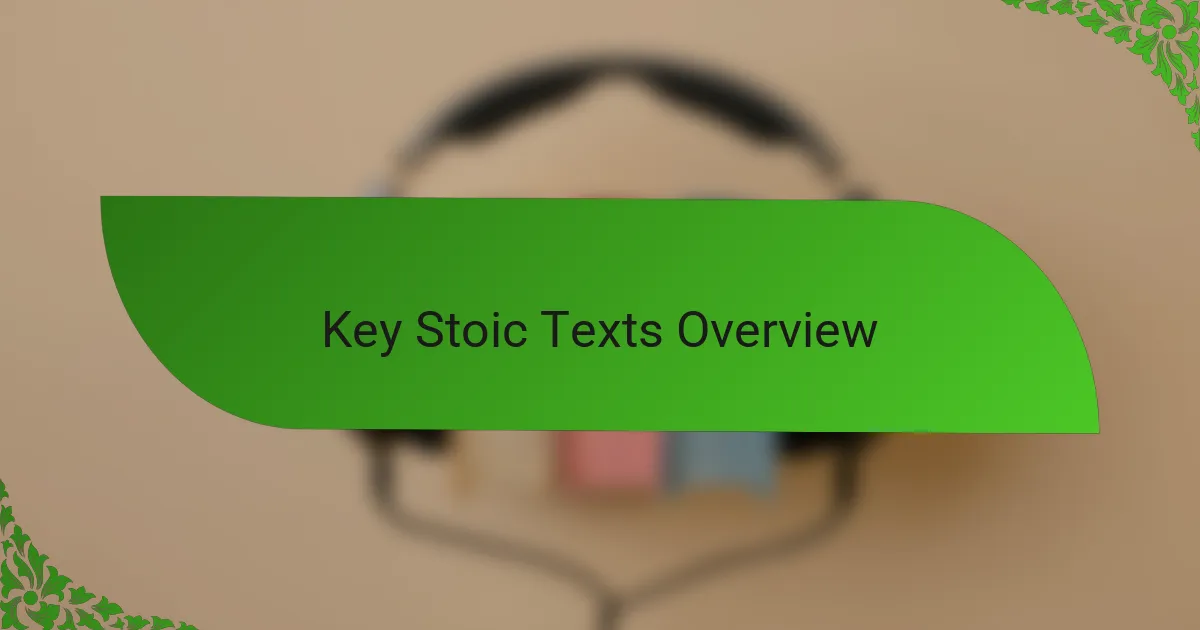
Key Stoic Texts Overview
Diving into Stoicism meant I had to get my hands on the original voices behind these ideas. I started with Epictetus’s Enchiridion, a concise manual that felt like a practical toolkit for daily life. Have you ever wished for straightforward advice when faced with frustration? That’s exactly what Epictetus offers, cutting through complexity with clear rules for maintaining inner peace.
Then came Marcus Aurelius’s Meditations, which felt like peeking into the mind of a philosopher-king wrestling with the same struggles I face. His journal entries are deeply personal, reminding me that even the greatest had to work through self-doubt and anxiety. Reading his reflections made me realize Stoicism isn’t about being unshakable, but about persistent self-improvement.
Lastly, Seneca’s letters stood out with their warmth and directness. His writings are like conversations with a wise friend urging me to live with purpose and resilience. I found myself resonating with his reminders to value time and face adversity with grace. These texts combined gave me a rich, human perspective on Stoic living that no modern summary could match.
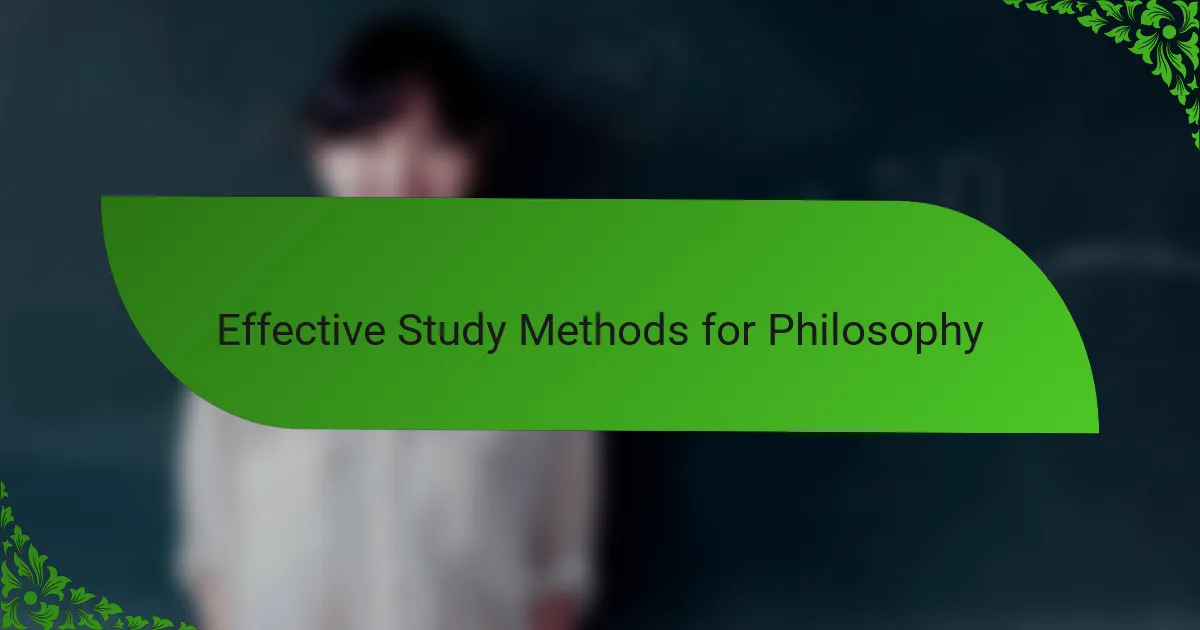
Effective Study Methods for Philosophy
When I first approached studying philosophy, especially Stoicism, I realized passive reading wasn’t enough. Taking notes by hand helped me process the ideas deeply—writing down key principles made them stick in my mind. Have you ever noticed how jotting thoughts makes concepts feel more real and personal? That subtle act transformed abstract Stoic tenets into practical tools I could refer back to.
Discussing ideas aloud became another crucial habit. Whether with friends or in online forums, verbalizing what I learned sharpened my understanding and exposed gaps in my thinking. Sometimes, I’d catch myself struggling to explain a Stoic concept clearly—that’s when I knew I needed to revisit the text. This dialogue approach turned solitary study into a dynamic, evolving process.
Lastly, I found applying philosophy to daily life was the true test and teacher. After each study session, I reflected on how Stoic principles could address challenges I faced that day. This habit made study personal and immediate, not just academic. Isn’t philosophy meant to guide how we live, not just how we think? Embracing this question changed how I engaged with every text and idea.

Applying Stoicism in Daily Life
Applying Stoicism daily first meant learning to pause before reacting. I caught myself responding impulsively in stressful moments—then reminded myself that while I can’t control others’ actions, I can control how I respond. That simple mental pause transformed frustration into calm reflection more times than I expected.
I also made it a habit to practice gratitude intentionally. Instead of wishing for things to be different, I focused on appreciating what was within my grasp—health, relationships, opportunities. This shift often lifted my mood and eased anxiety, showing me that contentment is truly an inside job, something Stoicism helped me realize deeply.
Sometimes, challenges still felt overwhelming, but Stoicism taught me to see obstacles as chances to build inner strength. When a tough situation surfaced, I asked myself: What virtue can I cultivate right now? Turning adversity into growth gave me a sense of purpose amid difficulty and reminded me why these ancient teachings still matter so much today.
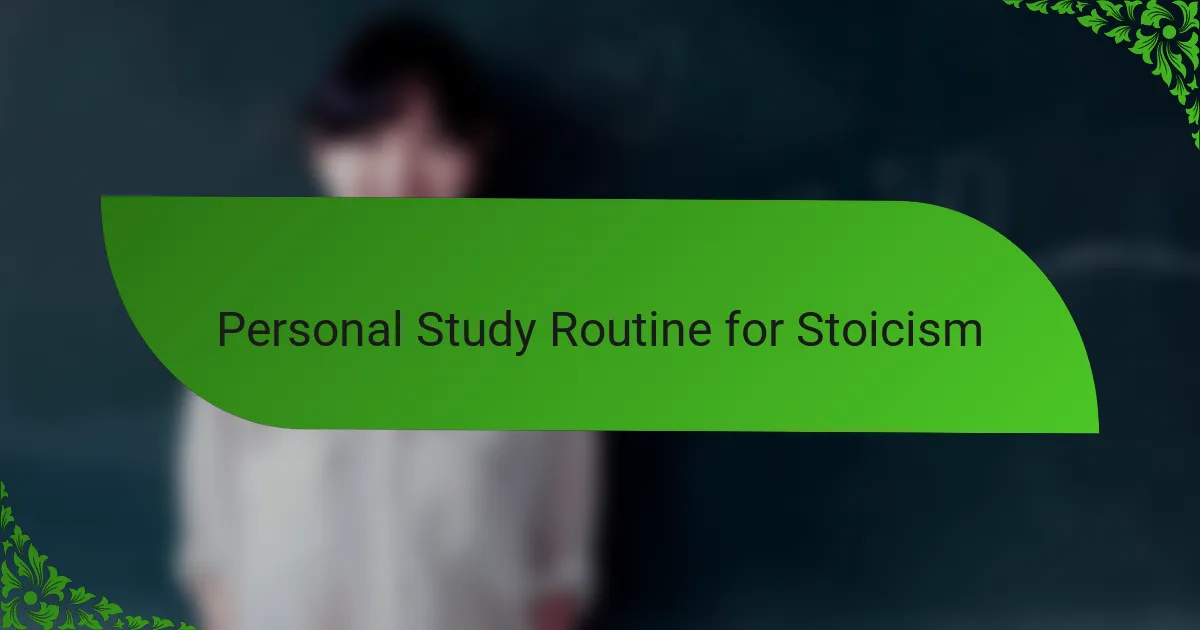
Personal Study Routine for Stoicism
Creating a consistent study routine for Stoicism became essential for me to truly absorb its wisdom. I dedicated a specific time each morning to read a few pages from one of the key texts, letting the ideas settle slowly rather than rushing through. Have you ever tried turning study into a ritual? It changes how the lessons stick because it becomes part of your day’s rhythm.
I mixed reading with journaling my thoughts and reactions, which brought the principles to life. Writing down how I could apply courage or temperance in real situations made the philosophy feel less abstract and more like a personal coach whispering guidance. This simple practice gave me space to reflect and internalize Stoicism beyond just intellectual understanding.
Sometimes, I revisited difficult passages multiple times, asking myself what I was missing. Instead of pushing forward, pausing and re-reading helped me see new layers of meaning. Have you ever had that moment when a text suddenly clicks after a slow burner of thought? Those moments kept me motivated and deepened my connection to the Stoic mindset.
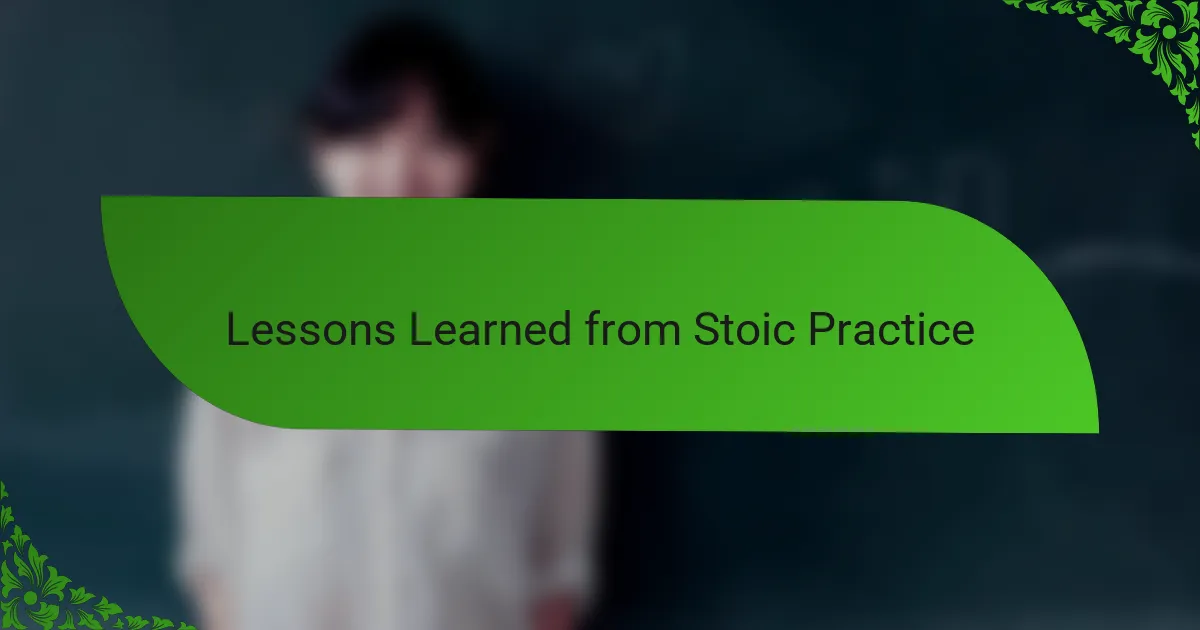
Lessons Learned from Stoic Practice
Stoic practice taught me the value of focusing on what’s truly within my power. I’ve noticed that when I fixate on external events, I feel anxious and helpless, but redirecting my attention inward brings a surprising sense of calm and control. Have you ever tried asking yourself, “Is this something I can change?” The simple act of answering that shifted my whole approach to life’s unpredictability.
Through practicing Stoicism, I learned that virtues like patience and resilience aren’t abstract ideals but essential muscles to strengthen daily. I recall facing a difficult situation at work where frustration bubbled up, yet reminding myself to respond with temperance helped me navigate the moment gracefully. This wasn’t about suppressing feelings but channeling them constructively—a lesson that still shapes how I deal with stress.
Perhaps the most profound lesson has been embracing obstacles as opportunities for growth. Instead of resisting challenges, I started to ask, “What can this teach me?” This mindset transformed tough experiences into meaningful lessons, making life’s hardships feel less like burdens and more like invitations to develop inner strength. Have you noticed how perspective can turn struggle into strength? That’s the heart of Stoic practice, as I’ve come to understand it.

Tips for Consistent Philosophical Growth
Consistency felt like the biggest hurdle when I began my philosophical journey. I found that setting small, manageable goals each day—like reflecting on one Stoic virtue or rereading a short passage—kept me steadily moving forward without feeling overwhelmed. Have you ever tried breaking big ideas into bite-sized pieces? That approach helped me stay curious and open without burnout.
Another tip I learned is to embrace setbacks as part of growth. There were days I felt I wasn’t “getting it” or slipping back into old habits, but instead of frustration, I reminded myself that philosophy is a lifelong practice. How often do we expect perfection instead of progress? Recognizing that inconsistency is normal made my study sustainable and deeply human.
Finally, I made a habit of journaling not just what I learned but how it touched me emotionally. Recording moments when a Stoic concept helped me through anxiety or impatience made the philosophy feel alive and personal. Isn’t philosophy most powerful when it resonates with your real-life struggles? This candid reflection fueled my motivation and deepened my connection to the Stoic path every day.